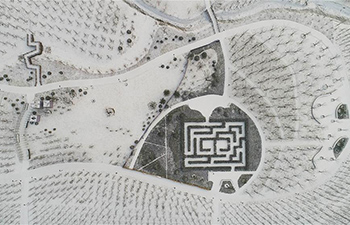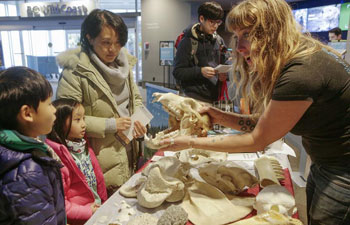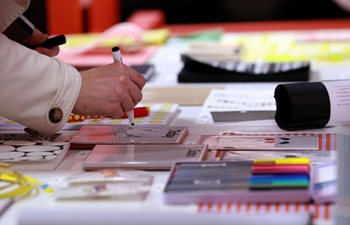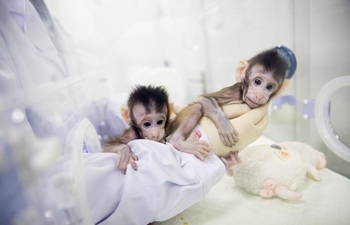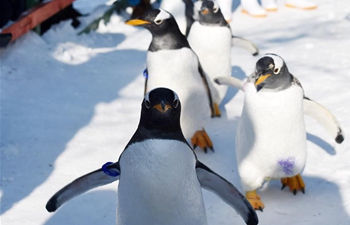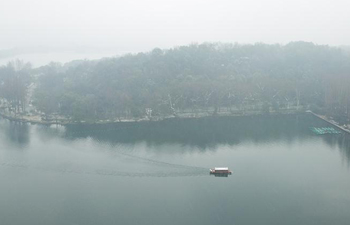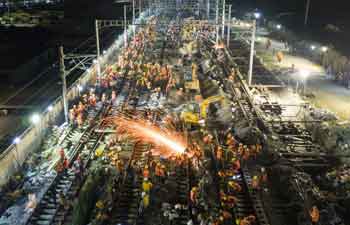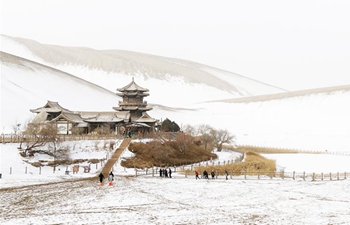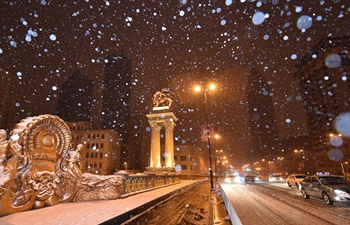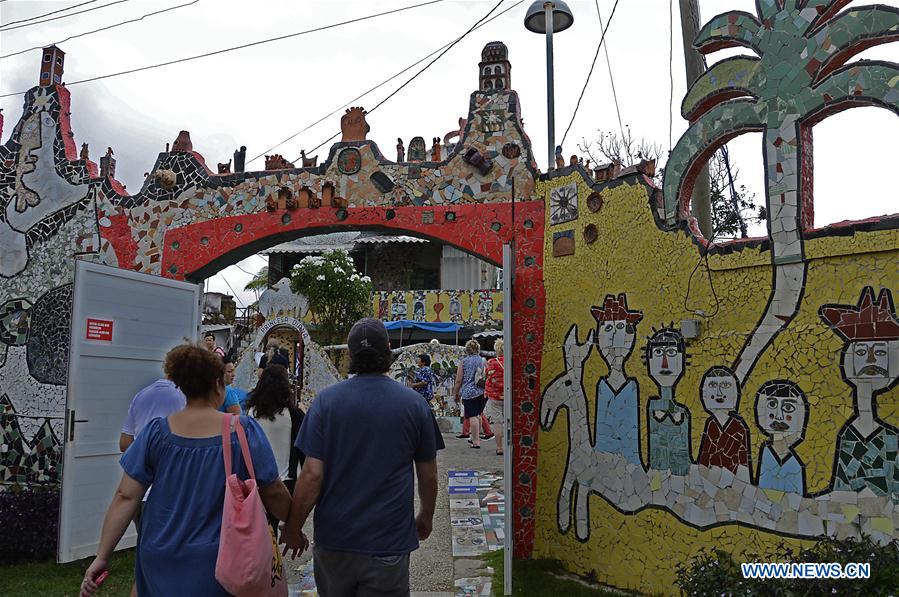
People walk past a facade benefited by the community cultural project "The Joy of Living" headed by the Cuban painter and sculptor Jose Antonio Rodriguez Fuster, in Jaimanitas of Havana, Cuba, on Jan. 25, 2018. Fusterland, a humble neighborhood to the west of Havana transformed from a remote fishing village, has become a hot tourist attraction in recent years thanks to the transformation, and the key to the fundamental change is, to the shock of many, art. Jaimanitas, or what many people call "Fusterland," owns its unusual popularity to Cuban painter and sculptor Jose Antonio Rodriguez Fuster. For the last 25 years, Fuster has used some of his income from the sales of artworks to improve the once remote fishing village. (Xinhua/Joaquin Hernandez)
by Raul Menchaca
HAVANA, Jan. 27 (Xinhua) -- Fusterland -- A humble neighborhood to the west of Havana transformed from a remote fishing village -- has become a hot tourist attraction in recent years thanks to the transformation, and the key to the fundamental change is, to the shock of many, art.
Jaimanitas, or what many people call "Fusterland," owns its unusual popularity to Cuban painter and sculptor Jose Antonio Rodriguez Fuster.
For the last 25 years, Fuster has used some of his income from the sales of artworks to improve the once remote fishing village.
The artist, who considers himself a beneficiary of the country's education system, began the transformation of Jaimanitas during the "Special Period," referring to the early 1990s, when Cuba was suffering an economic crisis following the disintegration of the former Soviet Union.
"It was a very unfortunate time for our economy. I saw myself with money and decided to start investing it in the community," he told Xinhua recently.
From an artistic point of view, he confessed that the crisis hit at a time when canvases and cardboard were not enough for him to express himself, so he started painting the walls of his house and those of his neighbors.
Taking the title of a work by Pablo Picasso, of whom he is "a fervent admirer," Fuster organized "The Joy of Living" project, which little by little covered Jaimanitas with art. It melds the clear influences of Picasso, as well as Spain's Antonio Gaudi and the Romanian Constantin Brancusi.
At present, Fuster's artistic legacy can be seen on the facades of more than 150 houses in the town, including the local doctor's, as well as two bus stops and several public spaces.
"I have always dreamed that art could be used to build something good for the community, because I do not create art only for the elite," he said while gesturing at the neighborhood that has been transformed into a colorful and extravagant labyrinth of tiles.
The once humble neighborhood is now an explosion of art and creativity with its epicenter at the artist's own home, the Jose Fuster Studio, a large residence decorated with sculptures, paintings and mosaics of all colors and patterns imaginable.
On the verge of turning 72, Fuster is seen by his neighbors as a savior who turned Jaimanitas into "Fusterland," as American journalist Tracey Eaton, from the Dallas Morning News, dubbed it a few years ago.
"Everyone who lives here is proud that people come to see what was a lost beach and has now become important," said Max Delgado, an artist who collaborates with Fuster, "Jaimanitas got on the map of Cuba after Fusterland."
Marianela Leyva and her husband Nelson Almaguer, who own a modest art gallery, also love the new look of the town.
"Fuster has brought benefits for the whole community, because his project has helped to improve the quality of life for everyone," says Marianela.
Her twin sons, Nelson and Alvaro, appear to be set to take "The Joy of Living" project into the future as they have studied with Fuster since they were little boys.
They then studied for four years at the School of Art Instructors and now attend college in Havana to graduate as art professors.
Fuster's influence may be noticed in the Naive style of these two young artists. They aspire to continue his mission, which has never ceased, even after Hurricane Irma struck last September.
The sea flooded over 60 meters inside the village and broke down a long retaining wall that the artist has later rebuilt with the help of the community.
Fuster has been living in Jaimanitas since 1975, but was born in Caibarien, another coastal town on the northern side of the island. At 14 he volunteered to teach reading and writing to farmers in the Sierra Maestra Mountains.
Later he studied art in Havana, and has been a professional artist since 1966, having taken part in over 600 exhibitions in Cuba and abroad.
Despite his personal success, Fuster does not stop engaging in community projects and is now committed to building an amphitheater and a play area for the young people of Jaimanitas.




